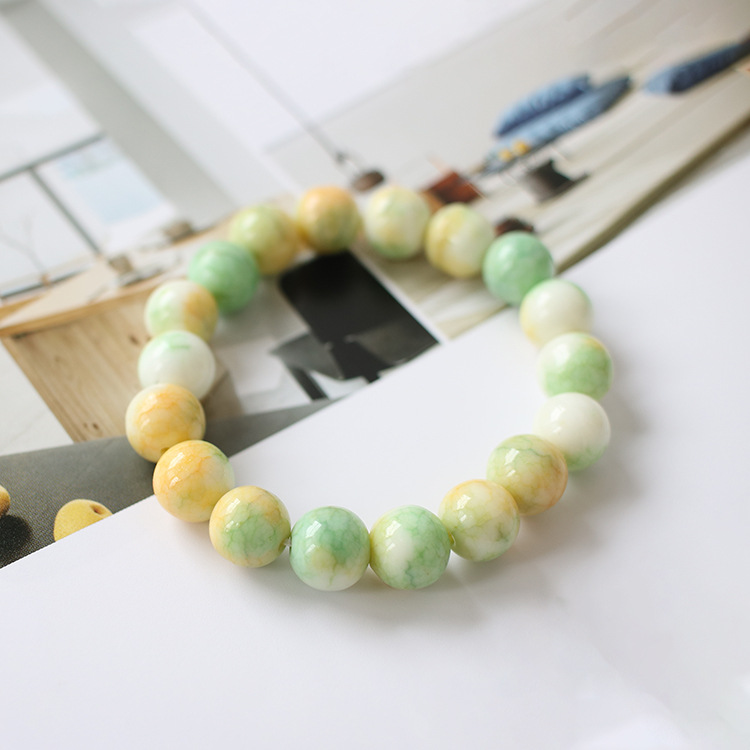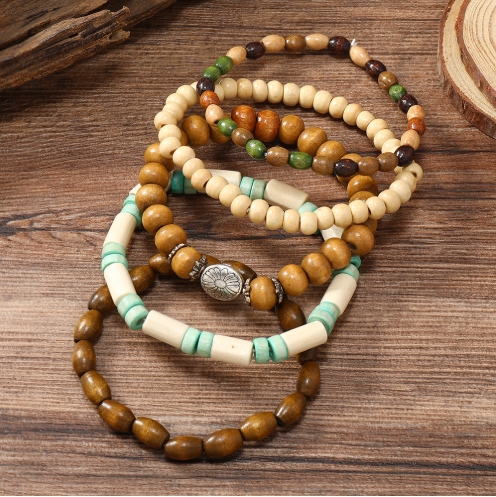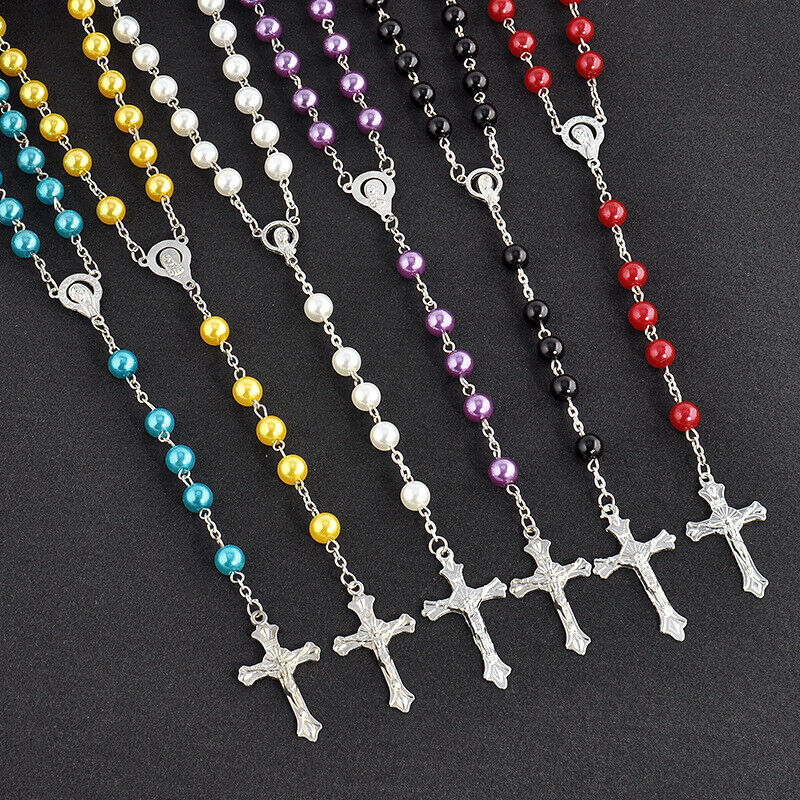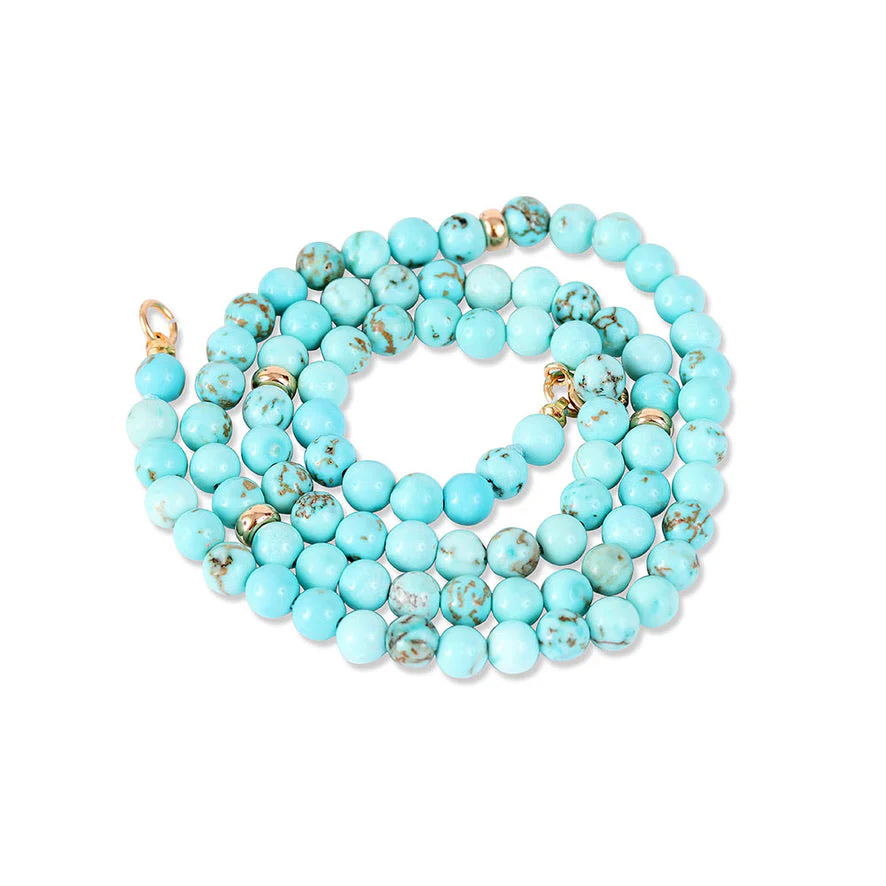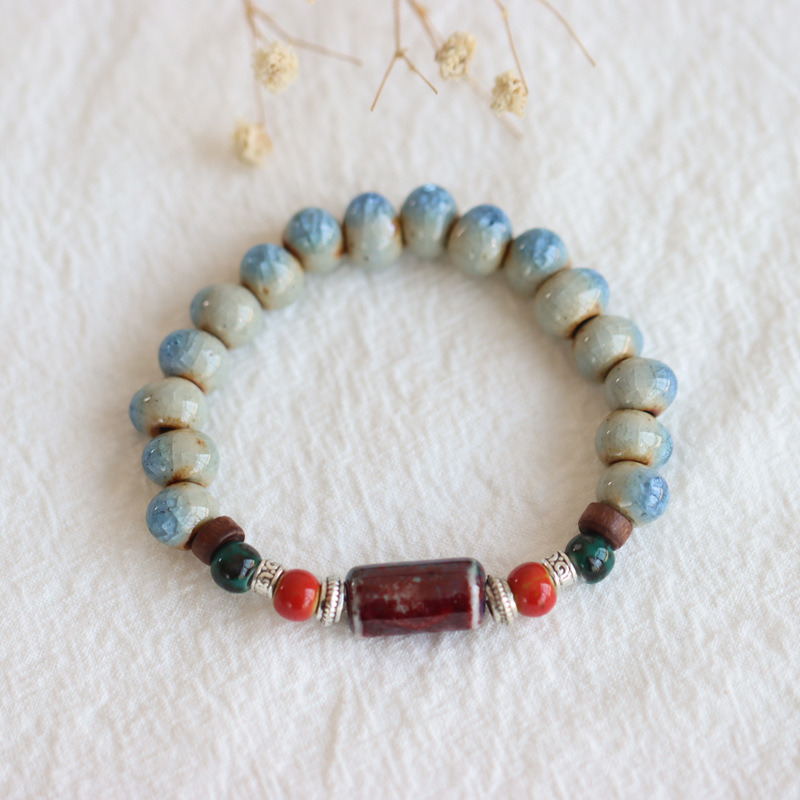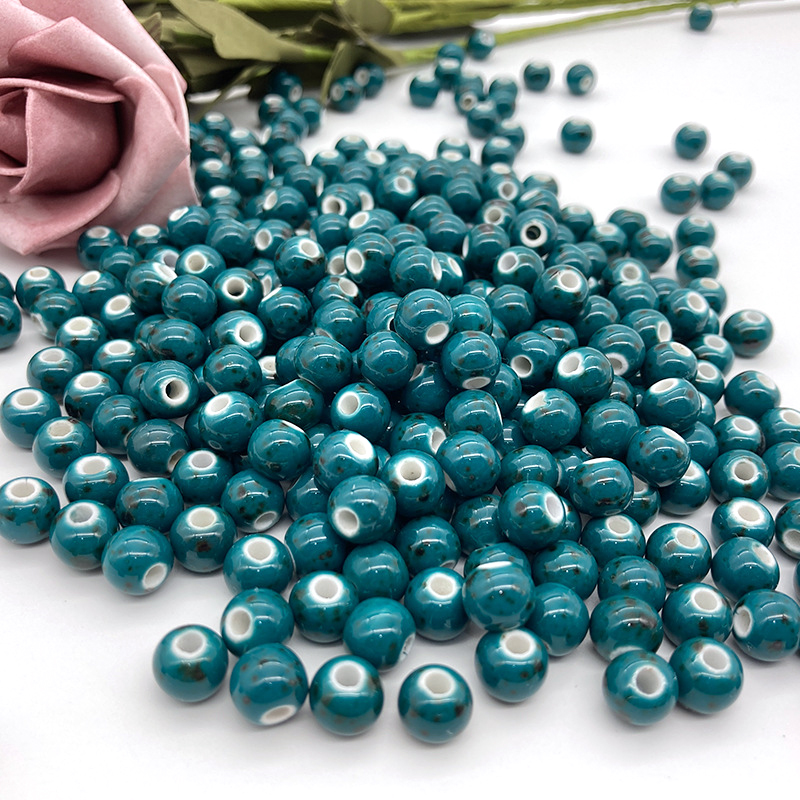Summary
By supplying essential components such as beads, stringing material, findings, and tools, these kits eliminate the need for extensive sourcing and allow users to focus on the creative aspects of bracelet making. The diversity of DIY bracelet kits is vast, including options like friendship bracelet kits, leather bracelet kits, beading kits, wire wrapping kits, loom kits, and macramé kits. Each type caters to different aesthetic preferences and crafting techniques, from the simple and colorful designs of friendship bracelets to the intricate and elegant patterns of wire-wrapped and beaded bracelets. These kits often come with detailed instructions, making them user-friendly and ideal for those looking to explore various jewelry-making methods. The convenience and variety offered by these kits make them an appealing choice for hobbyists and gift-givers alike. Notably, DIY bracelet kits also provide educational and therapeutic benefits. For children, these kits can develop fine motor skills, creativity, and patience. For adults, the act of crafting can serve as a stress-reliever and a means of mindfulness, promoting mental well-being. The satisfaction of creating personalized and unique accessories further enhances the appeal of these kits, allowing crafters to express their individual style and creativity through handmade jewelry. Despite their advantages, beginners might face challenges such as selecting the right kit, understanding instructions, and handling tools. However, these obstacles can be mitigated through the use of high-quality kits, online tutorials, and ergonomic tools. As users become more adept, they can experiment with advanced techniques and materials, continually pushing the boundaries of their creativity. Overall, DIY bracelet kits offer a rewarding and fulfilling hobby, blending artistry with practicality in the creation of bespoke jewelry.
Types of DIY Bracelet Kits
DIY bracelet kits offer a variety of tools and materials that cater to different styles and skill levels.
Friendship Bracelet Kits
Friendship bracelet kits are designed for creating simple, often colorful bracelets that can be shared with friends. These kits usually include skeins of colorful thread, beads, and sometimes charms
. Friendship bracelets are a fun and easy way to express creativity and bond with friends through crafting. They are perfect for beginners and experienced crafters alike who enjoy making personalized, meaningful gifts.
Leather Bracelet Kits
Leather bracelet kits offer materials to create stylish, often more rugged bracelets. These kits typically include leather cords, metal clasps, and sometimes additional decorative elements like beads or charms
. Leather bracelets are perfect for those looking to create accessories with a bit of an edge, and they can be customized to fit various styles, from punk-inspired looks to more elegant designs.
Beading Kits
Beading kits are among the most versatile and popular types of DIY bracelet kits. They allow crafters to create intricate designs using various beads. These kits typically include a selection of beads in different colors, shapes, and sizes, as well as stringing materials like elastic cord or beading wire
. Some beading kits also come with additional tools like pliers and wire cutters, which are essential for completing more complex designs. Beading kits are ideal for those who enjoy detailed work and want to experiment with different patterns and styles.
Wire Wrapping Kits
Wire wrapping kits are perfect for creating more delicate and sophisticated bracelets. These kits include materials such as wire (often copper or aluminum), beads, and necessary tools like pliers and cutters
. The process of wire wrapping involves twisting and looping the wire around beads to secure them in place, allowing for intricate and unique designs. This type of kit is excellent for crafters who enjoy detailed handiwork and are looking to create elegant, one-of-a-kind pieces.
Loom Kits
Loom kits are designed for making woven or braided bracelets. These kits typically include a loom, which is a tool used to hold the threads in place as you weave or braid your design
. They come with a variety of threads, beads, and sometimes charms, enabling crafters to create beautiful, intricate patterns. Loom kits are great for those who enjoy traditional crafts and want to create detailed, woven bracelets that stand out.
Macramé Kits
Macramé kits focus on knotting techniques to create bracelets with intricate patterns. These kits usually include waxed cotton cords, glue, scissors, and either strong tape or a clipboard to hold your work in place while you weave
. Macramé bracelets are known for their durability and are often designed to be water and sand resistant, making them perfect for beach outings and other outdoor activities. These kits are ideal for those who enjoy working with cords and want to create robust, stylish accessories.
Personalized Kits
Personalized bracelet kits come with an assortment of beads, including alphabet beads for adding names or messages
. These kits also feature a variety of colorful beads, star-shaped beads, and threading materials, allowing for endless customization options. Personalized kits are great for creating unique bracelets that carry personal significance, making them excellent gifts for friends and loved ones.
Components of a DIY Bracelet Kit
DIY bracelet kits are comprehensive packages designed to provide all the materials and tools necessary to create personalized bracelets. These kits offer convenience, versatility, and an opportunity for creative expression, making them ideal for both beginners and seasoned jewelry makers.
Beads
Beads are the cornerstone of any bracelet making kit. They come in a variety of shapes, sizes, and materials, allowing for endless creative possibilities.
- Round Beads: These are the most versatile and widely used beads, available in various colors and sizes.
- Alphabet Beads: Ideal for creating personalized bracelets with names or messages, though they may sometimes have small holes and inconsistent representation of letters.
- Heart-Shaped Beads: Symbolic and charming, perfect for expressing affection and crafting personalized pieces.
- Star-Shaped Beads: These add a celestial and whimsical element to beadwork.
- Animal-Shaped Beads: Popular for creating themed jewelry and accessories, ranging from domestic pets to wildlife. Specialty beads like Chevron Beads, Dichroic Beads, Mosaic Beads, Foil Beads, Cloisonne Beads, and Givre Beads offer unique designs and finishes for more intricate projects.
Stringing Material
The stringing material is crucial for assembling the beads into a wearable piece.
- Elastic Cord: Easy to work with and ideal for stretchy bracelets.
- Beading Wire: Provides durability and strength for more complex designs.
- Leather Straps: Adds a rustic and natural look to the bracelets.
Findings
Findings are the components used to finish and secure the bracelets.
- Clasps: Essential for fastening bracelets securely.
- Jump Rings: Used to connect different components.
- Spacers: Help in separating and organizing beads for a professional look.
Tools
Some kits come equipped with the necessary tools to facilitate the bracelet-making process.
- Pliers: For bending and shaping wire.
- Cutters: To trim excess stringing material.
- Bead Mats: To keep beads organized and prevent them from rolling away during assembly.
Instructions
For beginners, clear and comprehensive instructions are indispensable. Quality kits provide detailed guides with illustrations or video tutorials to help users master different techniques and create beautiful bracelets
.
Additional Features
Some kits offer extra features such as storage cases and organizers to keep materials tidy and accessible. These additional components can enhance the overall experience and make the crafting process more enjoyable
.
Materials Used in DIY Bracelet Kits
DIY bracelet kits come with a variety of materials designed to make the bracelet-making process accessible and enjoyable for all skill levels.
Essential Materials
Beads
Beads are the focal point of any bracelet design and come in various types such as glass, wood, metal, and even semi-precious stones
. Each type of bead offers different aesthetic and textural qualities, providing ample opportunities for creativity.
Stringing Material
Stringing material is crucial for constructing the bracelet and providing flexibility and comfort to the wearer. Common options include elastic cords, beading wire, and leather straps, each offering different levels of durability and ease of use
.
Clasps and Closures
Securing the bracelet in place is essential, and this is where clasps and closures come into play. These components ensure that the bracelet remains fastened and adds to the overall finished look
.
Tools
Tools such as jewelry pliers, scissors, and cutters are essential for manipulating beads and small components, as well as trimming excess material. Some kits even include specialized tools like bead mats for added convenience
.
Optional Materials
Paint and Markers
For those looking to add a personal touch to their creations, some kits include paints and markers. These can be used to create unique patterns or customize beads, adding another layer of creativity to the bracelet-making process
.
Specialized Items
As you become more comfortable with bracelet-making, you might find yourself experimenting with additional materials like leather strips, embroidery thread, or specialized items like cabochons and settings. These materials can provide unique design possibilities and elevate the complexity of your projects
.
High-Quality Elements
Investing in high-quality materials, such as Swarovski crystals or gemstones, can give your creations a premium feel. Additionally, ensuring that your cuts are precise and clean will contribute to a seamless and polished appearance
.
Types of Beads
Natural Organics
Beads made from natural organics include materials like bone, coral, horn, ivory, seeds, animal shells, and wood. These materials have been used throughout history and offer unique textures and aesthetics. Bone beads, for instance, are strong and perfect for carving and polishing
.
Natural Inorganics
This category includes various types of stones ranging from gemstones to common minerals. Gemstone beads come in all shapes, sizes, and price points and are suitable for different types of jewelry. Precious metals like platinum, palladium, gold, and sterling silver are also used to create high-quality beads
.
Synthetic Materials
Most synthetic beads are mass-produced, with glass and plastic being the most common types. Some high-end glass and lead crystal beads are cut into precise faceted shapes, often done by precision machinery for consistency. “Fire-polished” faceted beads are a more affordable alternative to hand-cut beads, providing a polished look through a two-part process involving molding and surface reheating
. By focusing on these materials and elements, you can create beautiful, durable, and unique bracelets that reflect your personal style and creativity.
Bead Shapes and Patterns
Beadwork is a skill that requires not just creativity but also precision and patience. Intricate patterns emerge as beads are meticulously strung, woven, and knotted together. From simple stringing to complex bead embroidery, each technique carries its own charm and cultural heritage. By understanding the various methods employed in beading, we gain insight into the craftsmanship behind these wearable works of art
.
Cultural Significance of Beading
The art of beading has deep roots in various cultures worldwide. From Native American beadwork telling stories of tribal history to African bead traditions symbolizing rites of passage, beads have been a universal language of expression. Exploring the cultural significance of beading allows us to appreciate how these bracelets serve as cultural ambassadors, preserving traditions and fostering cross-cultural connections
. From spherical beads to cylindrical ones, each shape carries its own symbolism. Circular beads may represent unity, eternity, or the cyclical nature of life, while angular shapes like cubes can symbolize stability and order. By examining the chosen shapes within a bracelet, wearers and creators alike can infuse their jewelry with intentional meaning, creating a visual language that transcends words.
Traditional Patterns in Beaded Jewelry
Beaded bracelets often follow specific patterns that echo cultural traditions and historical significance. Native American beadwork, for instance, incorporates geometric patterns that convey spiritual beliefs and tribal identity. In various cultures, specific patterns may symbolize protection, fertility, or even rites of passage. Understanding these traditional patterns adds depth to the appreciation of beaded bracelets, showcasing how they serve as carriers of cultural heritage
.
Modern Interpretations of Symbolic Patterns
In the contemporary landscape of beaded jewelry, artists often draw inspiration from traditional patterns while infusing their creations with a modern twist. The intersection of tradition and innovation allows for the exploration of new meanings and expressions. Geometric patterns may take on new significance, and asymmetrical designs may convey individuality and personal style. The fusion of traditional and modern symbolic patterns mirrors the ever-evolving nature of fashion and self-expression
.
Exploring Bead Shapes and Sizes
In the vast realm of beadwork, the diverse shapes and sizes of beads serve as the building blocks for endless creative possibilities. From tiny seed beads to boldly crafted focal pieces, the variations in form and dimension add depth and nuance to every piece of beadwork
. Classic round beads, faceted rounds, cylinder beads, and unique shapes such as hearts or teardrops provide a rich vocabulary for expressing creativity. The interplay between these elements allows artisans to design pieces that range from delicate and intricate to bold and dramatic.
Specialty Beads: Infusing Brilliance and Personal Touch
As we continue our exploration into the diverse universe of bead types, we arrive at the realm of specialty beads. These beads go beyond the conventional, adding unique characteristics and a personalized touch to your creations. Join us in unraveling the brilliance of crystals and the artisanal charm of polymer clay in this segment of our “Introduction to Bead Types” series
. Despite their diminutive size, seed beads wield significant influence in the world of beadwork. These small, often cylindrical beads are perfect for intricate designs and detailed patterns. Their ability to add texture and nuance to creations has made them a favorite for bead weavers and artists seeking to infuse their work with precision and delicacy.
Round and Rondelle Beads
Round and
Historical and Cultural Significance
Beads have a rich history that dates back centuries, with their use in spiritual practices spanning across cultures and religions. These small, often colorful objects hold a deeper significance that goes beyond their material form. The use of beads in spiritual practices can be traced back to ancient civilizations, with archaeological evidence suggesting that beads were used as early as 5,000 BCE in various parts of the world, including Mesopotamia, Egypt, and the Indus Valley. These early beads were made from natural materials such as shells, bones, and stones
. In these ancient societies, beads were not only decorative but also had spiritual connotations. They were believed to possess mystical powers and serve as a connection between the wearer and the divine. Beads were often incorporated into jewelry, amulets, and talismans, and were used in rituals and ceremonies. As civilizations developed, the cultural significance of beads grew. Different cultures assigned different meanings to beads, reflecting their unique beliefs and traditions. In Native American cultures, beads were used to tell stories and represent important aspects of their heritage. Each bead held a symbolic meaning and was carefully chosen to convey a specific message. In Africa, beads were an integral part of tribal traditions and rituals. They were used to adorn clothing and accessories, symbolizing social status, identity, and protection. The intricate patterns and colors of African beads were often associated with specific tribes and held deep cultural significance.
Ethnographic and Historical Collections
Basketry, ceramics, clothing, and ornaments are especially well-represented in the collections of the Iziko Museums of South Africa. These collections include objects of ethnographic and historical value associated with significant historical personalities. Contributions from early South African anthropologists, such as Winifred Hoernlé, Dorothea Bleek, Isaac Schapera, and Eileen Krige, are important complements to their published work
. Other sections of the collection, such as clothing, toys, and political material, document selected aspects of contemporary urban society. Due to the nature of these anthropological collections, the names of the makers of these artifacts were often not recorded. Despite this, the collections are historically and culturally significant in terms of representing South Africa’s cultural diversity as well as their value, aesthetics, and rarity. They range from artifacts from the early Stone Age, slavery, and the colonial period to the struggle against apartheid and the achievement of democracy.
Beadwork and Ethnic Identity
Clearly identifiable ethnic patterns in beadwork emerged only in the early 20th century, parallel to the increasingly strict and generalizing ethnic divisions of people under the colonial regime. For instance, the beadwork of the Zulu, Xhosa, Tswana, Sotho, Ndebele, Venda, and Tsonga-Shangaan peoples became visually marked through particular forms of beadwork, despite the flattening of differences that enabled the formation of larger, clearly separated politico-ethnic identities
. Yet the traditions thus created were, and still are, subject to consistent and calculated change. A comparison of early beadwork and its photographs against contemporary equivalents makes it quite clear that these traditions are malleable and have present iterations.
How to Use a DIY Bracelet Kit
Using a DIY bracelet kit is a convenient and straightforward way to begin your journey into jewelry making, especially for beginners.
Gather Your Materials
First and foremost, ensure that you have all the necessary materials that typically come with a DIY bracelet kit. This usually includes beads, strings, clasps, and essential tools like jewelry pliers and scissors
. The convenience of a kit lies in the fact that you don’t have to source these items individually.
Plan Your Design
Before you start threading beads or tying knots, plan the design of your bracelet. This involves laying out the beads in the order you want them on the bracelet, considering variations in size, shape, and color to achieve a balanced and visually appealing look
.
Follow Instructions
Most DIY bracelet kits come with a set of instructions or a guide booklet that provides detailed steps on how to assemble your bracelet. For instance, the HWTF x Makers Kit Braided Bracelets offer a mix of natural waxed cords and shiny gold beads, along with instructions on how to create adjustable sliding knot closures
.
Execute with Precision
As you begin crafting, ensure that your cuts are precise and clean to achieve a seamless finish
. For example, if you are making a woven yarn bangle, make sure to gather essential materials like yarn, double-sided tape, tapestry needle, and scissors, and follow the wrapping and weaving process meticulously.
Secure and Finish
Once your design is complete, secure all ends and closures to prevent any loose threads or dangling parts. Using super glue or jewelry glue can help bond certain elements together, such as attaching a clasp to the end of your design
. For added durability and shine, you can also apply a gloss coat as a finishing touch.
Experiment and Personalize
DIY bracelet kits often offer the versatility to experiment with different styles and materials. For instance, you might use natural leather strips, embroidery thread, or even specialized items like cabochons and settings to create unique designs
. By following these steps, you can make beautiful, personalized bracelets that reflect your style and creativity while enjoying a therapeutic and rewarding hobby.
Techniques in DIY Bracelet Making
DIY bracelet making offers a creative outlet for both beginners and advanced crafters, with various techniques that cater to different skill levels and styles.
Basic Techniques
Embroidered Copper Bracelets
One of the easiest ways to start your journey is with Lana Red Studio’s DIY guide for making an embroidered copper bracelet. This project utilizes 0.3mm copper foil, which is easy to shape and embroider. The guide provides step-by-step instructions for measuring, cutting, and embroidering, enabling you to create a beautiful, handcrafted bangle that reflects your unique style
.
Using Washi Tape and Paint
Another beginner-friendly technique involves using washi tape as stencils to create patterns on your bracelets. After applying multiple coats of paint for a solid look, finish with a gloss coat for added shine and protection. This method is perfect for adding personalized flair to your jewelry
.
Simple Friendship Bracelets
For those new to bracelet making, starting with a simple friendship bracelet pattern like the chevron is ideal. This pattern features V-shaped bands in alternating colors of thread and is one of the most beginner-friendly designs. Supplies typically include colorful threads and a few basic tools
.
Advanced Techniques
Multiple Strand and Layering Techniques
Once you have mastered the basics, you can explore more advanced techniques such as creating multiple strand bracelets. This involves using more than one strand and incorporating different colors or materials for a visually stunning effect. Layering techniques allow you to combine various types of cords or threads to add dimension to your designs
.
Combining Materials
Experimenting with different materials like leather, beads, and cords can result in eclectic and visually rich bracelets. For example, the Button Closure Wrap Bracelet is a versatile design that can be adapted with different materials and worn in multiple ways. Personalize it further by adding beads or charms
.
Braiding and Weaving
Braided bracelets, such as those created with HWTF x Makers Kit, combine natural waxed cords and shiny gold beads. The adjustable sliding knot closure makes them ideal for stacking with other accessories. Similarly, experimenting with weaving patterns like Chevron or Herringbone using ribbons and fabrics can produce dynamic and textured results
.
Tips for Success
- Quality Materials: Invest in high-quality materials to ensure your creations have a premium feel and longevity.
- Precision: Make precise and clean cuts to ensure a seamless finish.
- Symmetry and Consistency: Maintain symmetry and pattern consistency throughout your design for a polished look.
- Secure Fastenings: Ensure that all ends and closures are securely fastened to prevent loose threads or dangling parts.
- Patience and Neatness: Take your time and enjoy the process, maintaining neatness from planning to execution. By exploring these techniques and incorporating your creativity, you can craft beautiful, personalized bracelets that reflect your style and skills.
Benefits of Using DIY Bracelet Kits
One of the main reasons why DIY bracelet making kits are essential is because they provide endless creative possibilities. With a variety of beads, charms, and materials included in the kit, individuals can experiment with different designs and create something truly unique. This not only allows for self-expression but also makes for a great activity to do with friends or family
. Moreover, these kits offer a sense of accomplishment and satisfaction when one sees the final product. It is truly fulfilling to wear something that has been created by oneself, and the process of making the bracelet also serves as a stress-reliever and can be therapeutic in nature. Aside from being a fun hobby, DIY bracelet making kits are also an affordable option for those looking for personalized accessories. With just one kit, multiple bracelets can be made, making it cost-effective in the long run compared to buying ready-made jewelry. This cost-effectiveness is another significant advantage, as purchasing jewelry can be expensive, especially when seeking quality pieces. Making your own bracelets can be a more affordable option, giving you the freedom to experiment with various styles without breaking the bank. DIY bracelet making can be a wonderful hobby for kids as well. It teaches them patience, creativity, and fine motor skills. Starting with simple projects using large beads and elastic cord makes the activity easier for young hands to manage. Engaging in this craft can also be therapeutic and calming, providing a much-needed break from the demands of daily life. The process of stringing beads and creating intricate designs requires focus and concentration, allowing crafters to immerse themselves in a state of flow. This meditative aspect of jewelry making promotes mindfulness and a sense of tranquility. Crafting your own jewelry is immensely gratifying, as the ability to design and create unique pieces that reflect personal style and preferences is empowering and fulfilling. Crafters take pride in wearing jewelry that they have made with their own hands, adding a special touch of individuality to their accessories. Additionally, DIY bracelet making kits provide the opportunity to create personalized gifts. Making thoughtful and unique bracelets for friends and family by incorporating their favorite colors, initials, or elements that reflect their personality shows effort and care.
Challenges and Solutions for Beginners
Starting a journey in DIY bracelet making can be both exciting and daunting for beginners. Several challenges may arise, but with the right strategies, these obstacles can be effectively managed.
Selecting the Right Kit
One of the primary challenges for beginners is selecting the right kit. With an abundance of options available, it’s easy to feel overwhelmed. A macrame bracelet kit is highly recommended for complete beginners because it includes all necessary materials and instructions in a single bundle, making the process straightforward and manageable
.
Understanding Instructions
Many starter and deluxe kits come with basic instructions. However, these instructions are not always user-friendly and can sometimes be challenging to follow. In such cases, beginners might find it beneficial to turn to online video tutorials, which often provide more focused and detailed guidance
.
Handling Tools
Using the tools included in jewelry-making kits can be another significant hurdle. These tools, which often include pliers, wirecutters, and scissors, require grip strength and dexterity. Beginners might find it helpful to start with better-quality tools that feature ergonomic designs and textured handles for a more secure grip
.
Sourcing Materials
For those working off digital patterns or video tutorials rather than kits, sourcing the right materials can be a challenge. While these resources typically provide detailed instructions and supply lists, the responsibility of obtaining the materials falls on the crafter. This can be daunting for beginners who are not yet familiar with the various types of materials needed for different projects
.
Evaluating Quality and Value
Evaluating the quality and value of a DIY beading and jewelry kit is crucial. Beginners should examine the quality of the beads, findings, and tools included in the kit to ensure they are durable and will result in high-quality jewelry pieces. Additionally, it’s important to check the quantity of materials to ensure there are enough supplies to complete multiple projects or to experiment with different designs
. Price is also a key consideration, as affordability should be balanced with the quality of the kit’s contents.
Building Confidence
The process of learning can sometimes lead to frustration, especially when initial attempts do not turn out as expected. Documenting and sharing beginner projects within the crafting community can be a powerful motivator. By receiving constructive feedback and observing their own progression over time, beginners can build confidence and continue to push their creative boundaries. By addressing these challenges with informed choices and proactive strategies, beginners can enjoy a smoother and more rewarding experience in their DIY bracelet-making journey.
